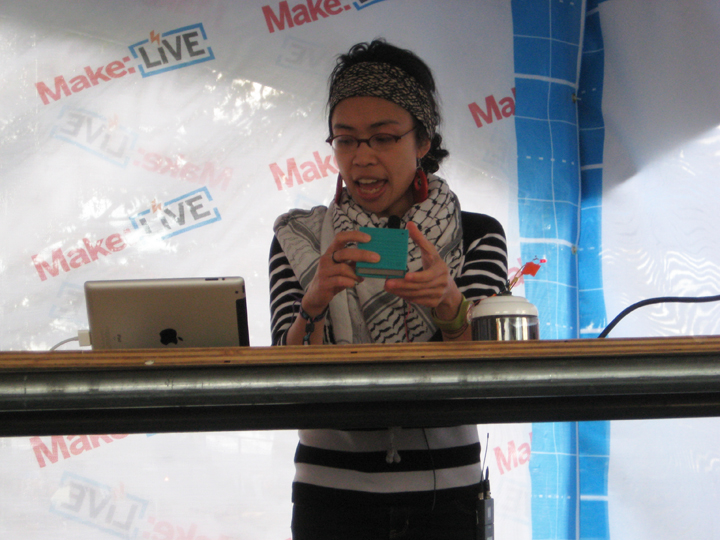On September 30, Arlene gave an OpenIR presentation at the World Maker Faire in Flushing, Queens. Her notes are below.
In March 2012, the educational hardware company KeegoTech issued a competition to write a curriculum using its MudWatt microbial fuel cells (MFCs). The competition challenge was posted at the Media Lab, and being fascinated by the idea of mud batteries and intrigued by how the tracking mud through in-situ processes could provide interesting data to compare with OpenIR, I entered the competition with this curriculum, which you can download here.
Originally, I wanted to write a curriculum in which the MudWatt’s “guts” (the anode and cathode) were placed in the ground, in different types of environments (i.e. forests, farms, etc.) Thanks to some guidance from KeegoTech, I modified this plan so that people following the curriculum would just stick with the original MudWatt and keep the mud contained in jars. Keegan Cooke and Kevin Rand, KeegoTech’s leaders, kindly sent some scientific literature and images to use for the curriculum. In fact, Keegan contributed to the research underlying the finding that farm soil is better than forest soil at powering mud batteries.
I was excited to win the KeegoTech competition and its prize of ten mud batteries and a bit of cash. With the ten MFCs, I can now carry out a larger-scale version of the curriculum I wrote. I’ve been collecting mud from all over the Boston area (and Provincetown, where I vacationed in August), even biking to a farm in Lexington to covertly grab some mud. My intention is translate power data from the MudWatts using Twine, a great device by Supermechanical, a startup that spun out of Information Ecology, my group at the Media Lab. Twine has a great web interface for translating sensor data from the device into plain-English tweets, SMS messages, and e-mails. I basically want to tweet MudWatt power levels, via Twine, to OpenIR.
This is what I talked about at the Maker Faire presentation, which you watch (~15 minutes) by clicking on the picture below. After we finish up OpenIR’s summative evaluations in Indonesia, building a Mud Power visualization system will be top priority.

